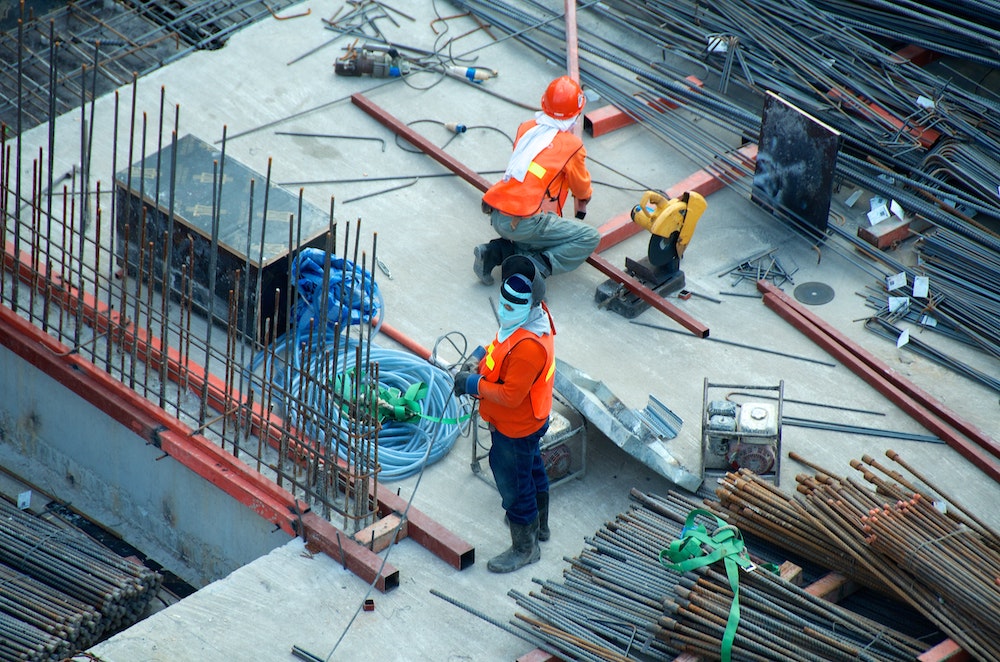With the ever-pressing issue of climate change causing more unpredictable and extreme weather season-to-season, it’s arguably never been more important to ensure you have a solid strategy in place to weatherproof your construction site.
With that in mind, it’s time to start considering practical solutions to minimise the danger posed by harsh weather to both the state of your site and to those working on it. From reducing speed limits to taking appropriate risk management measures, today we’re exploring a range of ways you can ensure a safe and secure site, whatever the weather.
Focus on safety measures
Planning ahead is the key to preventing a whole range of potential problems. As such, be sure to delegate the responsibility of keeping one eye on the weather forecast to one of your staff members – this will ensure you and your team are constantly aware of any potential weather hazards at all points.
If you use vehicles on site, imposing a strict speed limit is always a good idea. For example, in instances of dangerous weather conditions, reducing the site speed limit to 5mph is an effective means of minimising risk – while this may initially appear to reduce efficiency, it’s sure to benefit your workers and the wider efficiency of your project in the bigger picture.
Provide suitable storage solutions
The protection of construction equipment and your workers’ belongings should always be a priority. In cases of turbulent weather, weatherproofing your construction site becomes an even greater matter of concern.
When exposed to cold, rain, wind and snow, expensive and integral pieces of equipment can quickly become eroded and rusted, to the obvious detriment of the capabilities and efficiencies of the project.
As a result, having the appropriate covered storage space for machinery and equipment is an obvious necessity. But don’t stop there – having suitable storage solutions for workers’ personal belongings is also important to ensure they remain safe and in-tact throughout the working day. A set of sturdy lockers will do the trick here, providing staff with the peace of mind their items are secure while they’re working elsewhere on the site.
Protect your staff
Of course, your staff need protecting more than their belongings do when the weather turns rough! As a result, introducing sheltered areas where workers can enjoy a brew and a snack during their breaks is a good idea to ensure they stay warm and dry.
After all, preserving their health and mental wellbeing is a key component of construction management. When it comes to illness prevention, education is the most effective means. Popping up informational signs and posters regarding the symptoms of colds and illnesses, for example, will assist workers in identifying the signs early, helping them understand the precautions they need to take to properly look after themselves in undesirable weather conditions. The trick is to tackle any potential problems head-on, before they actually become a problem.
Encourage weather-appropriate attire
The most useful tool to protect workers is often their working attire. With this in mind, encourage wearing thick socks, hard boots and warm gloves – alongside all the usual safety attire such as hard hats and, where necessary, goggles and safety harnesses – to keep your workers warm during the long working days.
Extreme weather can also come in the form of excessive sun and heat, so be sure you can offer weather-appropriate attire at the other end of the spectrum, too. From high-visibility gilets to replace heavy coats to workman’s shorts that remain sturdy yet breathable, be sure to encourage your workers to think more about how the weather should affect their clothing choices to remain safe and healthy on-site, as well as encouraging them to wear sunscreen and hats to protect themselves against the sun’s rays.
An optimised weatherproofing strategy for your construction site should be a combination of government advised rules and regulations and your own initiative. Take the time to study potential hazards on your site and take the appropriate actions in advance to ensure you remain safe and flexible, whatever weather is thrown your way.


